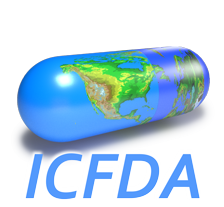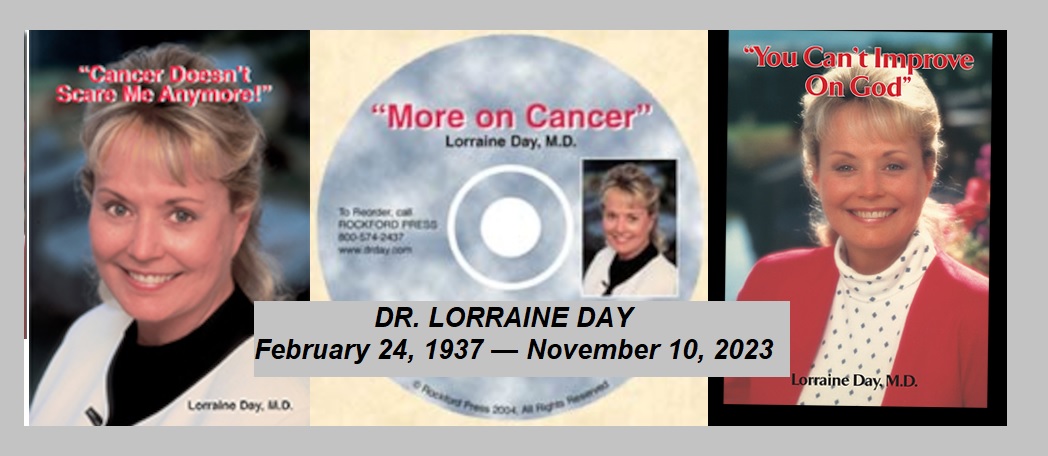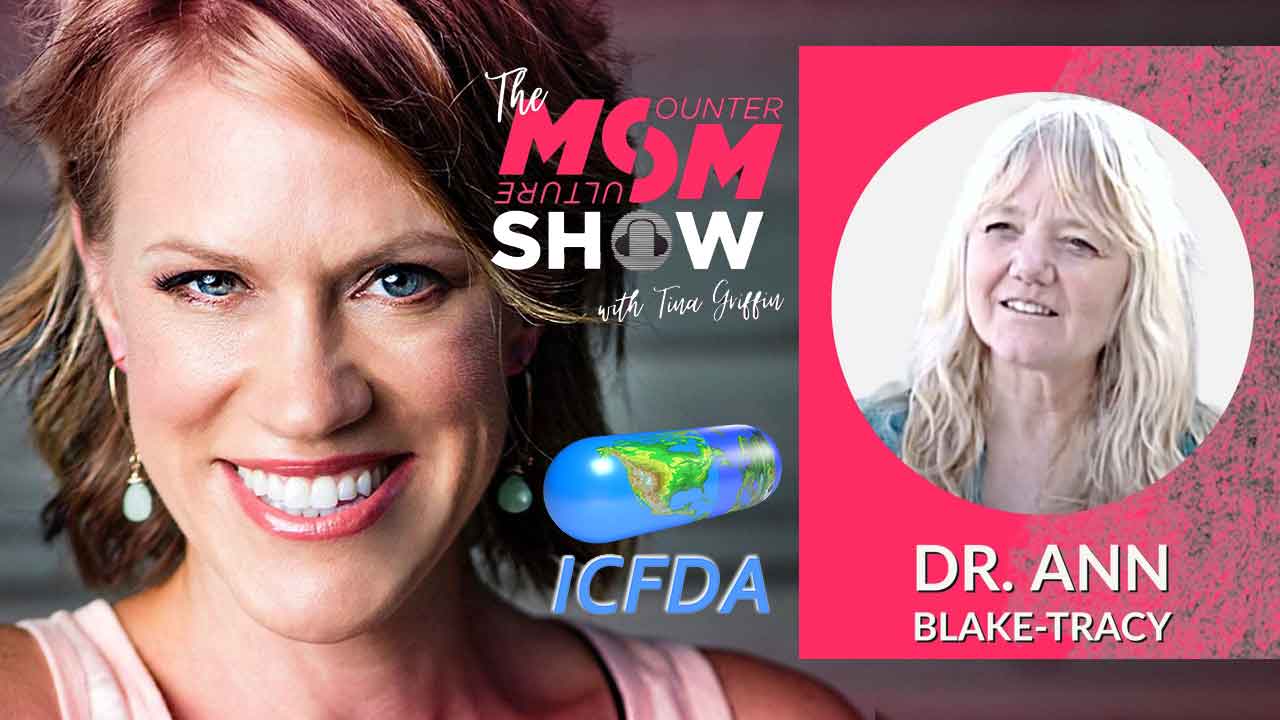I hope you have all had the chance to read “The Next Generation Medical
Guinea Pigs–Our Prozac, Zoloft and Paxil Babies” (located near the bottom of
the page at http://drugawareness.org/200000.html). I wrote this article for
the two major Salt Lake newspapers and it was published the summer of 1998.
It will give you the background information you need to understand before
reading Kelly O’Meara’s excellent article from Insight Magazine which follows
below. You will see clearly that the plan put into place then to get these
drugs approved for small children is coming to fruition now.
How can we stand by and allow $5 million of OUR tax dollars to go toward the
damaging of preschool children with these drugs?! And how can we allow an
additional $70 million to go toward producing even more citizens on
disability due to the adverse effects of these drugs – citizens who we will
then have to support for the rest of their lives with even more tax dollars?
And then there are all of those who we will support while they serve time in
prison for the crimes they committed while under the influence of the drugs,
not to mention all of those lives lost – productive creative individuals who
could have contributed to make our society even greater. Our allowing this to
happen makes us all accomplices to this terrible national tragedy because it
could not happen without our money and our consent. We must all do all in our
power to educate those around us and alert our government officials that we
do not want this to continue.
And thank you Kelly and Insight Magazine for your hard work in bringing these
issues to the attention of the public!
Ann Blake-Tracy, Executive Director,
International Coalition For Drug Awareness
www.drugawareness.org
__________________________________________
A Hill and Tip Trip
By Kelly Patricia O’Meara
omeara@…
Insight Magazine
This Clinton-Gore team advocates identifying schoolchildren as mentally ill
and requiring them to take psychotropic drugs to control any inattentive
behavior.
I think that part of what we’ve got, though, is to reflect how we can both
identify and get help to children who need it, whether or not they want it or
are willing to accept it,” declared first lady and wanna-be junior senator
from New York, Hillary Rodham Clinton. The first lady’s comment, put in the
context of how to deal with tragedies such as the shooting at Col-umbine High
School in Littleton, Colo., was delivered to a standing-room-only crowd at
the June 7, 1999, White House Conference on Mental Health. She was directly
advocating the forced drugging of schoolchildren with psychotropic drugs such
as Ritalin.
The first lady, however, was not alone in advocating this chilling agenda for
dealing with schoolhouse behavioral problems. During the conference that
critics dubbed a cheerleading session for the pharmaceutical industry, the
president’s top mental-health adviser and candidate for first lady, Tipper
Gore, joined in leading the psychopharmacological charge. In fact, nodding to
Tipper, President Clinton told the mesmerized crowd: “She knows more and
cares more about this issue than anyone else I personally know.”
The vice president’s wife “knows more” about this issue? Beyond earning a
masters’ degree in psychology more than 20 years ago and having been treated
for depression, say critics, Gore’s knowledge of mental illness is limited at
best and misinformed at worst. For example, Gore displayed some of her
knowledge on this subject during the president’s weekly radio address to the
nation just before the White House conference when she announced that
Americans must change their attitudes and “dispel the myths about mental
illness once and for all.” She said, “One of the most widely believed, and
most damaging, myths is that mental illness is a personal failure, not a
physical disease … and we are learning that many mental disorders are
biological in nature and can be medically treated.”
Members of the opposing team, which include a growing number of
well-respected physicians who have spent their lives resisting subjective
diagnoses of mental illnesses, are astonished by such pronouncements. They
tell Insight they would jump at the opportunity to present their contrary
data from such a highly visible platform as the well-publicized Clinton-Gore
White House conference but were not invited to offer opposing research.
Instead, the spotlight was given to Steven Hyman, director of the National
Institute of Mental Health, or NIMH.
Hyman pulled a slide show out of his black bag and wowed the star-struck
crowd with his evidence that, indeed, mental illness is a “real disorder of
the brain.” To prove his point, Hyman said, “I brought a few pictures”
because “I think pictures are worth an awful lot. I just want to show you a
picture that is somewhat alarming. What we see here on the left is a healthy
person with a normal brain, and then on the right, someone who has had severe
depression for a long time. What you see outlined in red at the bottom is
that a key structure acquired from memory actually gets smaller. It
deteriorates if depression is not treated.”
Apparently caught up in the frenzy of breakthrough medical “proof” of mental
illness, the audience broke into enthusiastic applause.
Hyman’s slide show was nothing if not deeply flawed, the most basic omission
being a failure to present the case history of the subject shown in the
slides. For instance, during Hyman’s show not once did he mention whether the
patient on the right, who “had severe depression” and whose slide showed “red
at the bottom” had been given psychotropic drugs for any length of time prior
to capturing the brain on film. In fact, if this were the case, critics tell
Insight, the right-brain slides, rather than being reflective of a
scientific breakthrough supporting the premise that the depression caused the
mental illness, would support arguments made by opponents that the change in
the brain in fact was caused by prescribed psychotropic medication.
To psychiatrist Peter Breggin, founder and international director of the
Center for the Study of Psychiatry and Psychology (www.Breggin.com), or
ICSPP, a Maryland-based research and educational network, and author of a
dozen books, including Talking Back to Ritalin, Talking Back to Prozac and
Reclaiming Our Children, Hyman’s slide show was just that — a show.
“Physicians and researchers like Hyman are guilty of the PET-scan scam,” says
Breggin. “They compare the brains of people who are diagnosed with something
like Attention Deficit-Hyperactivity Disorder, or ADHD, or depression with
people who don’t have these diagnoses. They then claim to the gullible
audience that there is a discernible difference in the brains.” According to
Breggin, “There is no known difference in the brains of any patient with a
psychiatric diagnosis, nor is there any difference with the mythical
biochemical imbalance. In fact, we have no instrument for even measuring such
an imbalance. When there are differences in brain scans between two
individuals they sometimes are caused by psychiatric-drug use and other times
represent normal variation. No reputable physician would ever claim to be
able to diagnose a psychiatric problem from a brain scan.”
Harold Koplewicz, the vice-chairman of the department of psychiatry at the
New York University Medical Center, an invited guest speaker at the White
House conference, even went beyond the contention that mental illnesses are
brain disorders. Koplewicz said, “Essentially, these diseases are no-fault
brain disorders. They are familial, they run in families and they have
predictable onset and course.” The doctor presented no data to support such
interesting remarks but “essentially” waived any personal responsibility or
validation that such life experiences as mental distress or anxiousness might
be normal.
Since such problems are physical, and beyond personal control or remedy,
Koplewicz reasons, tragedies such as what occurred in Littleton are “most
probably preventable” as a matter of public health. “Normal children,” he
continued, “just don’t snap and go out on a shooting spree. Children who
commit violent crimes almost always have histories of violence, depression or
other mental-health problems. The problem is we have never really looked at
the underlying cause of all this violence — which is childhood psychiatric
illness.”
So what was going on there? Apparently “looking at all the possible
underlying causes” of school-age violence — the announced reason for the
Hillary-Tipper conference — was not on the agenda. Making a statement about
the 6 million children being “treated” for ADHD with highly addictive
stimulants, including Ritalin, did not fit that bill. Nor did even one of the
distinguished speakers raise the issue first reported last year by Insight
[see “Guns & Doses,” June 28, 1999], faxed to the White House before the
conference, revealing the dramatic connection between the then five most
recent school shootings: All the accused shooters had been treated with
psychotropic drugs, including Ritalin, Luvox and Prozac.
It would not be long before the New York Times, the Washington Post and
national weekly newsmagazines were following Insight’s lead, but when the
Hillary-Tipper team had the chance to recognize the problem quickly and in
prime time they demurred.
The controversy surrounding the use of psychotropic drugs on children began
after the diagnosis for ADD/ADHD was voted into the Diagnostic and
Statistical Manual of Mental Disorders, or DSM-IIIR, in 1987. The
prescription of Ritalin (methyl-phenidate), a highly addictive stimulant
categorized as a Schedule II drug by the Drug Enforcement Agency, or DEA,
skyrocketed from less than a quarter of a million in 1986 to 6 million today.
Certainly it is unlikely that Clinton-Gore psychiatric spokesmen Hyman and
Koplewicz were unaware that Ritalin is pharmacologically similar to cocaine
in its pattern of abuse, given that red flags were raised years ago by the
World Health Organization, or WHO, the DEA and even the Archives of General
Psychiatry.
Within the year since Insight began reporting on this issue, not only are
many mental-health experts questioning the overuse of psychotropic drugs on
children but also the validity of the latest Diagnostic and Statistical
Manual of Mental Disorders, the DSM-IV, as it continues to broaden the circle
of mental illness to in-clude practically every child, with the implication
that pharmacology offers a quick solution. For example, in the January 2000
issue of Clinical Psychiatry News, respondents were asked to evaluate the
psychiatric diagnoses presented in the DSM-IV. The result was dramatic. “The
DSM-IV has gone too far. There are too many diagnoses without any objective
basis or biological support,” said Houston psychiatrist Theodore Pearlman.
“There has never been any criterion that psychiatric diagnoses require a
demonstrated biological etiology,” said Harold Pincus, vice chairman of the
DSM-IV task force.
To indicate how far from reality are the advocates of passing out pills in
the schools, it is noteworthy that Hyman apparently was not even
communicating with his colleagues at the American Academy of Pediatrics, or
AAP. All of the new AAP guidelines for diagnosing ADHD, like those listed in
the DSM-IV — for example, exhibiting behaviors such as not listening when
spoken to directly, failing to follow directions, losing things, being
forgetful and easily distracted and fidgeting with hands or feet — are
subjective observations on the part of the treating physician. However, after
listing the new guidelines, the AAP concludes that “other diagnostic tests,
sometimes considered positive indicators for ADHD, have been reviewed and
considered not effective [emphasis added]. These tests include lead
screening, tests for generalized resistance to thyroid hormone, and brain
image studies [emphasis added].”
In other words, the dog-and-pony show that Hyman put on for the first and
second ladies was not based in science, and the AAP is just another in a long
list of experts to refute such fraudulent claims. Hyman also was
contradicting his own remarks made earlier in a New York Times article when
he said, “Magnetic Resonance Imaging, or MRIs, produce scientifically
meaningless pretty pictures which are essentially reminiscent of phrenology.
Who knows where or when the much-sought answers will emerge?”
While it is insulting to many physicians who are aware of the fraud that is
being perpetrated in the name of treating mental illness for men in positions
of extreme power to continue to push the strict pharmacological line, this
has been endemic in the Clinton-Gore administration. David Satcher, the U.S.
surgeon general, is a case in point.
Fred Baughman, a pediatric neurologist dedicated to exposing fraudulent
medical diagnoses of mental illnesses, took the surgeon general to task for
what Baughman called Satcher’s “attempt to represent mental disorders as
actual diseases.” In response to a first-ever Surgeon General’s Report on
Mental Illness, made public in December 1999, just months after the Columbine
shooting tragedy, Baughman wrote to the nation’s top medicine man asking,
“Why have you chosen to be the first-ever Surgeon General to issue a report
on mental health? As I have shown, it has little or nothing to do with
medical science, bona fide diseases or epidemics. Have other factors
motivated you? You might have addressed the biggest, most heinous epidemic of
all, that of mandating Ritalin and other addictive, dangerous, even deadly
amphetamines for 5-6 million entirely normal American children, as
‘treatment’ for the wholly fraudulent psychiatric ‘disease’ ADHD.”
Baughman concluded his letter: “Your role in this deception and victimization
is clear. Whether you are a physician so unscientific that you cannot read
their contrived ‘neurobiologic’ literature and see the fraud, or whether you
see it and choose to be an accomplice — you should resign.”
Loren Mosher, a psychiatrist and 30-year member of the American Psychiatric
Association, or APA, resigned from the organization over the blatant
infiltration of pharmaceutical money now permeating the organization and
concurs with Baughman about the surgeon general’s mental health report.
Mosher tells Insight that “the report is a joke.” He says, “There are no
tests for these so-called mental diagnoses. You can’t do that with
psychiatric diagnoses.”
Regardless of the continual stream of articles from reputable physicians
contradicting the biochemical advocacy being pushed by the administration,
Satcher, Hyman and Koplewicz have been elevated in stature and now are
considered foremost authorities on psychiatric public health, greatly due to
the platform provided by the nation’s first and second ladies. Now the first
lady has announced a $5 million research grant for Hyman’s NIMH to study the
effects of psychotropic drugs on children under the age of 7.
“Hillary is promoting young children to take psychiatric drugs,” says
Breggin. “This is the most extreme Big Brother, Nineteen Eighty-Four kind of
national policy. It has empowered NIMH to do something that they never would
have done — that is to spend $5 million on clinical trials involving hundreds
of preschool children. In the past, NIMH would have been afraid of doing such
dangerous, unethical and unscientific research. The repercussions are going
to be worse because this will now encourage the Food and Drug Administration,
or FDA, to accept similar clinical trials done on very young children with
Ritalin of a sort that have shown disastrous effects leading to the
discontinuation of use in most cases.”
For David Oaks, coordinator of Support Coalition International, an
Oregon-based organization representing 80 groups working for mental-health
rights, the first lady’s research announcement was a warning shot over the
bow. Oaks is alarmed by what he considers the push to medicate. “There is no
safety anywhere,” he tells Insight. “The forced administration of drugs is
definitely going up. Nearly 40 states have laws where they have
forced-drugging in your own home. Out of the White House conference came the
endorsement of the Program of Assertive Community Treatment, or PACT. That’s
the teeth of the outpatient forced-drugging: at-home drug delivery, where
they will come to your home every day if necessary for medication compliance.
Drugging is the be-all and end-all.”
Not everyone is buying the Clinton administration line. In mid-May a
class-action lawsuit was filed in Dallas for alleged fraud and conspiracy in
overpromoting the stimulant medication Ritalin. Three national defendants are
named: Novartis Pharmaceutical Corp. (formerly Ciba Geigy), the manufacturer
of Ritalin; CHADD (Children and Adults with Attention Deficit/Hyperactivity
Disorder), a parent’s organization that is partially funded by drug
companies; and the APA. Among the allegations: The drug company
“deliberately, intentionally, and negligently promoted the diagnosis of
ADD/ADHD and sales of Ritalin through its promotional literature.” The
lawsuit also charges the drug company with “actively supporting groups such
as Defendant CHADD, both financially and with other means, so that such
organizations would promote and support the ever- increasing implementation
of the ADD/ADHD diagnosis as well as directly increasing Ritalin sales.” And
the lawsuit further claims that “Defendant American Psychiatric Association
conspired, colluded and cooperated with the other Defendants” while taking
“financial contributions from Ciba Geigy as well as other members of the
pharmaceutical industry.”
Andy Waters of the Dallas law firm of Waters and Kraus, www.RitalinFraud.com,
is lead attorney for the plaintiffs. He tells Insight that “the nature of the
lawsuit is for consumer fraud. The legal concept is the unholy alliance of
the psychiatrists, manufacturers and parents groups that have combined to
create a diagnosis that didn’t exist and create and accelerate an enormous
market for Ritalin. My sincere hope is that 60 to 90 days from now we’ll have
a judge ordering the defendants to release information. I think we will find
that Novartis was involved in the making of the diagnosis — it’s just too
close a connection to rule it out.”
Meanwhile, a growing number of members of state boards of education, state
legislatures and the U.S. Congress have been taking action to stop the tidal
wave of psychotropic drugs being prescribed for children under the guise of
public health. New York, New Jersey, Idaho, Rhode Island, Minnesota, Georgia,
Colorado, Arizona and Pennsylvania have passed or have legislation pending
that confronts the issue of widespread prescription of psychotropic drugs to
school-age children. Legislative topics include examining the impact of
psychotropic drugs, prohibiting school personnel from recommending or
discussing medications for schoolchildren, requiring pharmacists to disclose
the potentially addictive nature of psychotropic drugs and preventing any
school official from requiring that children be placed on psychotropic drugs
as a condition for remaining in school.
Back at the White House conference, however, the solution to the violence
confronting America’s youth —the Hillary-Tipper answer to the
psychotropic-drug epidemic — was more drugging. In fact, the first and second
ladies exercised all their mental-health resources to try to convince the
nation that mental illnesses are “real illnesses of the brain” and “should be
treated the same as physical illness.” This would mean, of course, that
public-health authorities should have the right to examine every American
child for mental illness as a matter of public health — and diagnose and
treat them pharmacologically in whatever way they choose.
Regardless of the fact that there simply are no data to support such claims,
the president praised his wife and mental-health guru — the person “who knows
more and cares more,” Mrs. Gore, for the “truly remarkable experience.” The
White House conference was, to the president, “stimulating, moving and
humbling,” because “it’s so real.”
Then, under the guise of exercising presidential authority, Clinton
in-structed the nation’s largest private insurer, the Federal Employee Health
Benefit Plan, to provide full parity for mental and physical health. He
directed the Health Care Finance Administration to encourage states to better
coordinate mental-health services, and he called for medication targeted at
people with the most serious mental disorders who rely on Medicaid. And, to
wind up his mental-health giveaway, the president announced that he had
requested the largest increase in history — some $70 million — “to help
provide more mental-health services.”
Tipper Gore did not respond to questions Insight faxed to her office and
Hillary Clinton’s communications director refused Insight’s request for an
interview, saying, “We’re going to pass on providing comments to your
questions.” So one only can imagine the kind of mental-health programs those
ladies will be working for should Hillary be elected to the Senate and Tipper
take over as first lady. As for the need to profile, diagnose and dope
America’s schoolchildren to assure their mental health, well, the
Clinton-Gore psychiatrists have proved how much children “need” it — “whether
or not they want it or are willing to accept it.”



